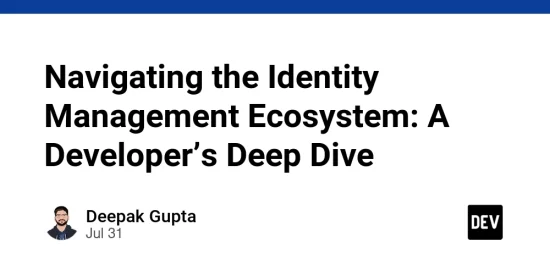TL;DR
This guide explores the technical layers and integration patterns behind modern identity management, focusing on IAM, CIAM, PAM, governance, authentication, machine identity, and emerging trends. It provides developers with actionable architectural insights and implementation advice—without any code snippets or diagrammatic instructions—emphasizing real-world development challenges and solutions.
Table of Contents
- Introduction: Real-World Identity Management Challenges
- Why Developers Should Master Identity Ecosystems
- Pillars of Identity Management
- IAM, CIAM, WIAM: The Core Building Blocks
- Privileged Access Management
- Governance and Compliance
- Modern Authentication Methods
- Machine and AI Agent Identity
- Access Control: RBAC, ABAC, PBAC
- Specialized and Industry-Specific Solutions
- Decentralized and Quantum-Safe Identity
- Integrating Your Identity Stack: Architecture at a Glance
- Implementation Hurdles and Best Practices
- What’s Next for Developer-Led Identity
- Conclusion: Mastering Integration, Context, and Security
- Discussion Point: Where Are Your Identity Pain Points?
Introduction: Real-World Identity Management Challenges
Modern applications aren’t limited to user logins or simple access controls. Developers must design systems that address workforce, customer, and partner identities, secure privileged accounts, automate compliance, and handle machine-to-machine authentication—all within fast-evolving cloud and regulatory environments. Understanding how these building blocks interconnect is essential to robust, future-proof application development.
Why Developers Should Master Identity Ecosystems
- Security: Most breaches exploit weaknesses in identity, not app code.
- Experience: A seamless login and onboarding process is critical to user satisfaction.
- Compliance: Meeting frameworks like GDPR and HIPAA demands granular access governance and auditability.
- Scalability: Supporting millions of users, devices, and agents requires thoughtful, reliable identity architecture.
Pillars of Identity Management
IAM, CIAM, WIAM: The Core Building Blocks
- IAM solutions manage access and authentication for employees and internal stakeholders, enabling features like single sign-on (SSO), user provisioning, and granular role assignments.
- CIAM platforms are optimized for external customers, emphasizing large-scale user management, social logins, consent flows, and self-service.
- WIAM integrates workforce identity with HR systems, automating vital tasks like onboarding and offboarding to reduce risk and operational drag.
Identity systems must handle requests from diverse actors, routing every authentication through standardized layers that govern user attributes and access logic.
Privileged Access Management
- PAM secures sensitive admin and service accounts by controlling credential usage, monitoring sessions, and rotating secrets to minimize risk.
- PIM (Privilege Identity Management) covers temporary privilege elevation, using policies and approvals to govern just-in-time access to critical functions.
When integrating PAM, ensure that all critical events are auditable and that privilege escalation workflows are tightly automated and linked to incident detection.
Governance and Compliance
- IGA (Identity Governance & Administration) enforces regular reviews of who has access to what, supports separation-of-duties, and automates certification cycles.
- Access Governance tools provide ongoing policy enforcement and granular audit capabilities, integrating with applications for continuous oversight.
Automated tools should flag overprivileged users and unreviewed access, making it easier for developers and security teams to keep permissions tight and compliant.
Modern Authentication Methods
- Multi-Factor Authentication (MFA) strengthens login flows with additional identity proofs such as biometrics, device verification, or one-time codes.
- Passwordless Authentication leverages device-native credentials (e.g., biometrics or hardware keys) for a seamless, security-first experience.
- Adaptive Authentication dynamically applies authentication steps based on context, using risk signals like geo-location, device, or behavioral analytics.
Selecting the right method means balancing user experience with organizational risk profiles and making provisions for fallback and recovery.
Machine and AI Agent Identity
- Machine Identity solutions assign and manage credentials for scripts, services, containers, and infrastructure resources, reducing the attack surface through tight automation and secret rotation.
- Service Accounts are purpose-specific identities for cloud operations, CI/CD pipelines, and other automated workflows.
- AI Agent Identity is an evolving field, focusing on unique challenges faced by automated agents acting autonomously within complex systems.
Developers should automate credential lifecycle management and enforce strict access boundaries, especially in distributed and cloud-native architectures.
Access Control: RBAC, ABAC, PBAC
- RBAC hinges on fixed roles mapped to explicit permissions, suitable for static access needs.
- ABAC (Attribute-Based Access Control) uses policies dependent on user, device, or environmental attributes for dynamic, context-aware decisions.
- PBAC (Policy-Based Access Control) relies on centralized policy engines and language-based rules to enforce access in real time, supporting fine-grained, scalable control in complex environments.
Design your policy logic to be extensible, auditable, and testable. Contextual access controls provide a crucial layer of defense against lateral movement and privilege escalation.
Specialized and Industry-Specific Solutions
- Federation and SSO are critical for secure, scalable, and standards-based collaboration across company boundaries.
- Directory Services (LDAP, AD) underpin hierarchical user and group management, serving as the source of truth for many identity workflows.
- Identity Analytics adds real-time anomaly detection and behavioral insights, allowing rapid identification and response to suspicious activities.
Industry-specific compliance requirements (e.g., HIPAA for healthcare, KYC/AML for financial services) demand extra layers of auditability and privacy that should be built into your identity stack from day one.
Decentralized and Quantum-Safe Identity
- Decentralized ID (DID) approaches use verifiable credentials or blockchain-style architectures to return control to the user and future-proof systems against central-point failures.
- Quantum-Safe Identity is an emerging area, aiming to protect against future cryptographic threats, and will influence how credentials are issued, stored, and rotated.
Begin monitoring developments here, as cryptographic and platform standards will shift over the coming years.
Integrating Your Identity Stack: Architecture at a Glance
A robust identity architecture invites every application request through standard authentication/provisioning layers, applies dynamic access policies, tracks all actions for governance, and integrates seamlessly with analytics and compliance workflows. Tight API communication between components is essential, as is audit-friendly logging and orchestration for onboarding, offboarding, and privilege changes.
Implementation Hurdles and Best Practices
- API Fragmentation: Each vendor or tool exposes different interfaces and models. Abstract these differences with internal gateways or SDKs.
- Legacy Migration: Moving users from legacy systems requires careful data mapping, transformation, and reconciliation to maintain security and minimize user disruption.
- Orchestration Complexity: Automation of onboarding, role assignment, and access revocation must span both cloud-native and on-premise components, making robust workflow design crucial.
- Testing and Audit: Simulating attacks, testing escalation paths, and maintaining detailed logs should be continuous, especially for compliance-heavy environments.
Developer Best Practices:
- Prefer standard protocols to increase interoperability and future-proofing.
- Automate credentials management and reviews wherever possible.
- Rely on policy-based logic to contextualize access, reducing the risk of overpermissioning.
What’s Next for Developer-Led Identity
Identity management is moving toward decentralized, context-aware, and AI-augmented architectures, driven by policy-as-code, privacy mandates, and quantum-safe cryptography. As a developer, start modularizing your identity layers now, encapsulating vendor logic, and adopting new standards as they emerge to stay ahead in this evolving field.
Conclusion: Mastering Integration, Context, and Security
A deep, practical understanding of the identity management ecosystem empowers developers to build secure, resilient, and compliant systems. The ecosystem is only getting more complex; your best bet is to focus on seamless integration, robust policy enforcement, and continuous governance to mitigate risks and enable innovation.
Discussion Point
Where have you faced the most pain integrating or orchestrating modern identity tech? Was it bridging old and new systems, automating governance, or managing supplier APIs? Share your insights, dead-ends, and creative workarounds with the community in the comments!
This article was adapted from my original blog post. Read the full version here: https://guptadeepak.com/understanding-the-complete-identity-management-ecosystem/





